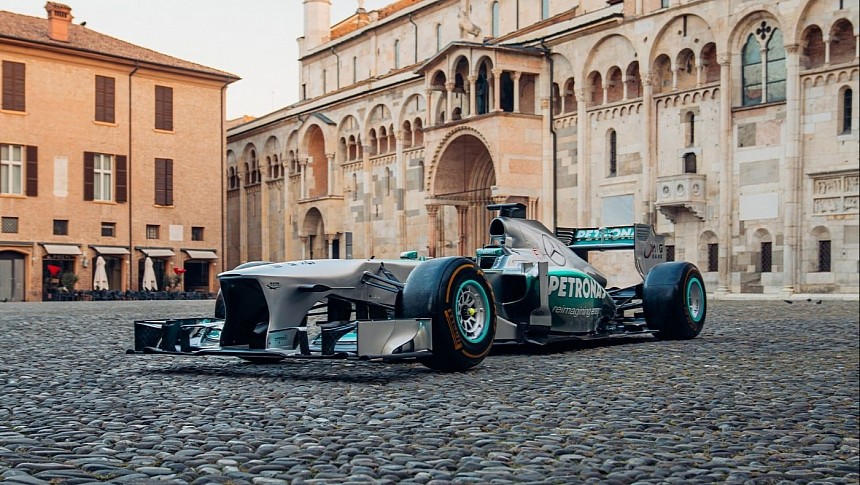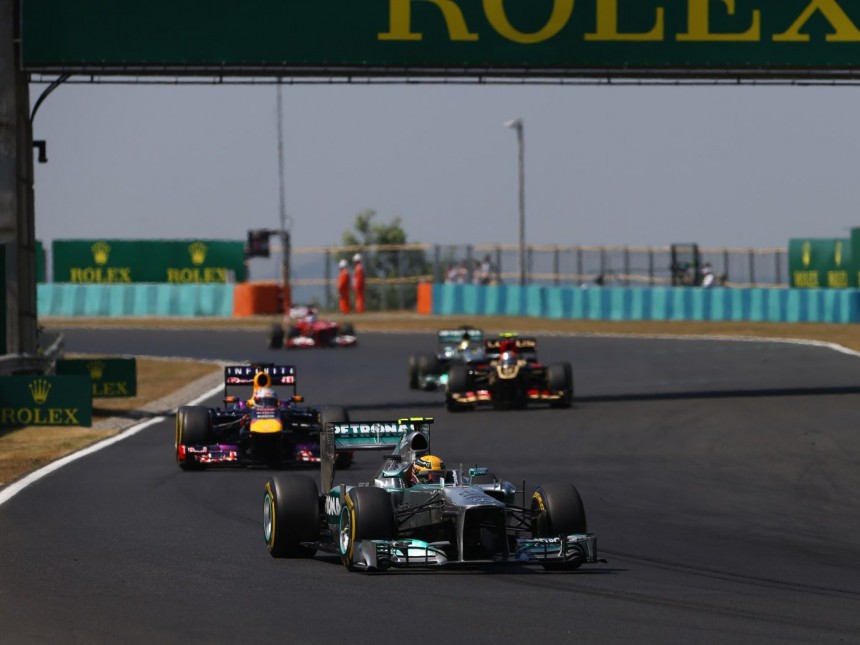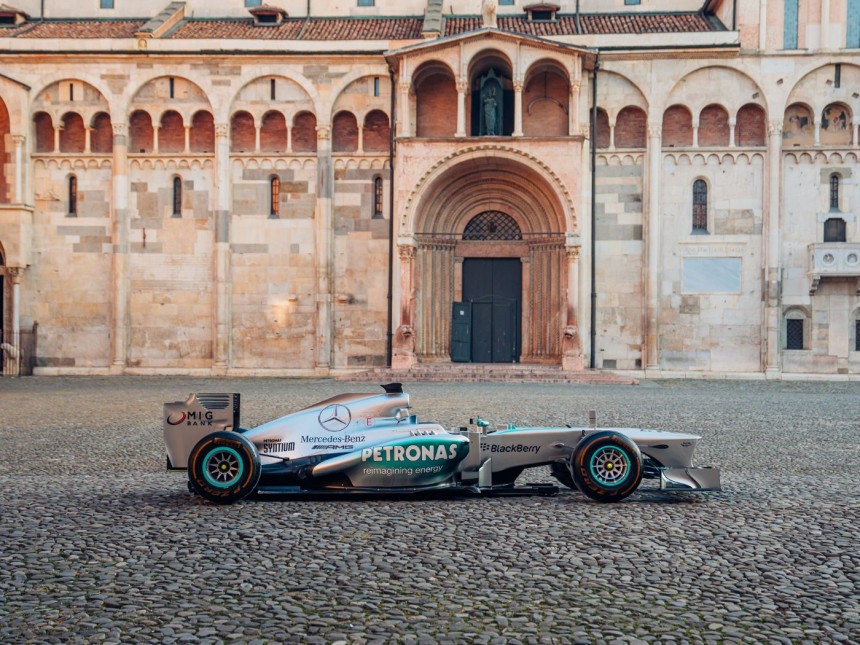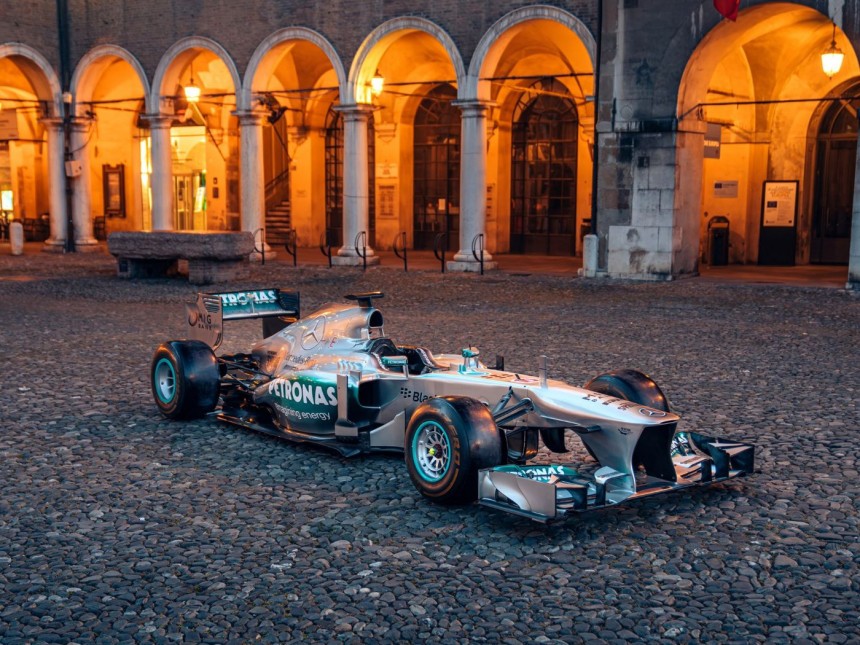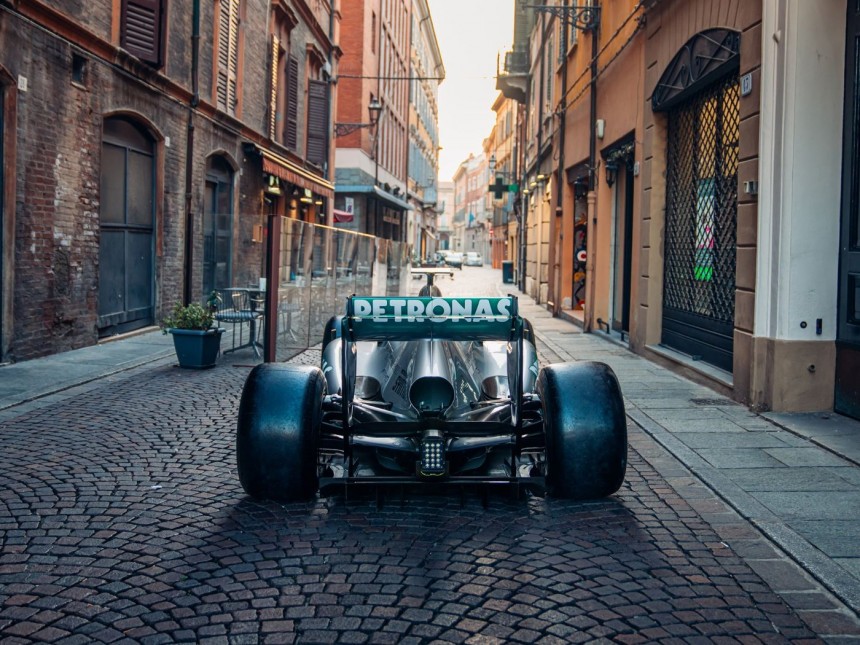Despite Red Bull's and especially Sebastian Vettel's dominance, the 2013 Formula 1 Championship was a season that showcased the pinnacle of motorsport excellence, with multiple drivers and teams battling for glory in a relentless pursuit of speed and victory.
The entire season was marked by exceptional performances, dramatic incidents, and ruthless rivalries between both drivers and constructors.
It's not hard to look back at a championship that took place a decade ago, mainly because of all the drama that it featured from the beginning to the end.
From start to finish, the 2013 F1 season was a symphony of firsts and lasts across the 11 teams and 23 drivers who contested the 19 Grands Prix that made up the calendar that year.
Some key moments comprising the championship will hold little value for those impressed by statistics, as Vettel's successful run to his fourth and final world title with Red Bull was almost as straightforward as ever.
With that in mind, others will probably remember other highlights, such as the infamous Multi-21 controversy, the challenges cars faced with those Pirelli tires, Alonso's unsuccessful fight for a title with Ferrari, or Kimi Raikkonen's legendary F1 comeback with Lotus.
As for the 'lasts,' 2012 had been the final season for Norbert Haug in F1, the man who played a pivotal role in orchestrating the return of the Silver Arrows in the sport in 1993, masterminding their partnership with McLaren and later guiding them through the acquisition of Brawn GP. They had transitioned into a works team by 2013, and Toto Wolff had taken over as their Team Principal.
That season was also the last we heard of the screaming 2.4-liter, naturally aspirated V8s, one of which makes for the main subject of this story.
Apart from those moments, one of, if not the biggest surprise, came from Lewis Hamilton's switch from championship-winning McLaren to a then-new Mercedes Grand Prix team, which was still initially seen as a midfield team.
Driving the 'not great, not terrible' and occasionally unreliable Mercedes F1 W04, Hamilton and Nico Rosberg helped transform the team from an underdog into a constructors' championship contender by the end of the season, eventually finishing in second place behind Red Bull.
As its name implies, the W04 was only the fourth project for the Mercedes F1 GP team. After a few unsuccessful seasons, the team has been restructured almost from the ground up in the search for podiums and even wins.
The Mercedes F1 W04 was the first fruit of that restructuring. Still, the team developed it knowing that everything they had learned about the car would be thrown out the window the following year because of the regulation changes that brought the hybrid V6s into place in 2014.
With that in mind, Lewis Hamilton had switched from a championship-winning team. Hence, the car had to have at least some strong points to help the drivers challenge what had become a hegemony by Sebastian Vettel and Red Bull.
The W04 faced a challenging start to the season. Despite Hamilton and Rosberg clinching two podium finishes and achieving three consecutive pole position starts within the initial five races, the car gained notoriety for being exceptionally hard on its tires.
This issue had emerged when Pirelli was already under substantial criticism for the fragile nature of its tire compounds and the narrow operational range, which magnified the inherent weaknesses of the W04.
Thankfully, development and possibly true grit helped the team turn things around throughout the season, culminating with Hamilton's Hungary Grand Prix win after also starting from pole position.
Although it was the only victory of the season for the team, it was the second triumph for a Mercedes-branded F1 car since the 1955 Italian Grand Prix and Lewis Hamilton's first win from a string of many for the German carmaker.
So it happens that the exact car that made all this possible in the hands of Hamilton will soon go on auction in Las Vegas. Since RM Sotheby's expects it to fetch between $10 and $15 million (9.5 to 14 million Euros), I decided to look closely at what makes it so special.
Alterations in the regulations in 2012 had led to the introduction of a peculiar "platypus" nose design for the cars. However, this design faced widespread criticism.
Following the overwhelmingly negative response, the FIA originally announced that the forthcoming changes in the sporting regulations for the 2014 season would eliminate this "platypus" effect. Additionally, there were plans to gradually phase out the stepped nose for the 2013 season.
The FIA eventually approved a proposal allowing teams to conceal the stepped nose using a so-called "modesty plate." This panel was intended to obscure the step without making significant aerodynamic changes to the car or providing an aerodynamic advantage. Yet, it made the cars look like land sharks on wheels.
The biggest 'shark-nose' effect was probably seen on the Mercedes F1 W04, which only adds to the car's mystique and significance.
As the final Formula 1 Mercedes powered by a naturally aspirated engine, the W04 featured a similar powertrain arrangement as its track competitors.
We are talking about a 90-degree V8, limited to 18,000 rpm and augmented by the now-defunct KERS system. KERS stands for Kinetic Energy Recovery System for those unfamiliar with the technology, and it was used to capture and store the kinetic energy of the cars during braking.
This harvested energy was then stored to be utilized later during acceleration, making for some pretty strategic passes in the years it was used in F1.
The engine delivered around 750 horsepower on its own, while the KERS system could add another 80 horsepower at the touch of a button and when the conditions (and rules) allowed.
Thanks mainly to a much smaller footprint than modern F1 cars, the W04 had a minimum weight of just 1,410 lbs (642 kg), making it much easier to pass other cars even on narrower tracks.
Sebastian Vettel's dominance, Alonso's resilience, Raikkonen's resurgence, and Hamilton's switch to Mercedes made the 2013 season thrilling for both fans and participants.
If the Mercedes F1 W04 gets sold for a considerable sum of money despite not even winning the constructors' championship, it would make for an even more thrilling story about the season.
To put things into perspective, the most expensive post-2000 Formula 1 car ever sold at an auction until now is Michael Schumacher's Ferrari F2003, which went for $14.8m in 2022.
With that in mind, and despite only winning one race, the Mercedes F1 W04 stands tall as one of the most remarkable cars of the 2013 championship and possibly the most significant car ever driven by Lewis Hamilton, as it heralded a new F1 era.
It's not hard to look back at a championship that took place a decade ago, mainly because of all the drama that it featured from the beginning to the end.
From start to finish, the 2013 F1 season was a symphony of firsts and lasts across the 11 teams and 23 drivers who contested the 19 Grands Prix that made up the calendar that year.
Some key moments comprising the championship will hold little value for those impressed by statistics, as Vettel's successful run to his fourth and final world title with Red Bull was almost as straightforward as ever.
With that in mind, others will probably remember other highlights, such as the infamous Multi-21 controversy, the challenges cars faced with those Pirelli tires, Alonso's unsuccessful fight for a title with Ferrari, or Kimi Raikkonen's legendary F1 comeback with Lotus.
As for the 'lasts,' 2012 had been the final season for Norbert Haug in F1, the man who played a pivotal role in orchestrating the return of the Silver Arrows in the sport in 1993, masterminding their partnership with McLaren and later guiding them through the acquisition of Brawn GP. They had transitioned into a works team by 2013, and Toto Wolff had taken over as their Team Principal.
That season was also the last we heard of the screaming 2.4-liter, naturally aspirated V8s, one of which makes for the main subject of this story.
Apart from those moments, one of, if not the biggest surprise, came from Lewis Hamilton's switch from championship-winning McLaren to a then-new Mercedes Grand Prix team, which was still initially seen as a midfield team.
Driving the 'not great, not terrible' and occasionally unreliable Mercedes F1 W04, Hamilton and Nico Rosberg helped transform the team from an underdog into a constructors' championship contender by the end of the season, eventually finishing in second place behind Red Bull.
Rollercoaster of Emotions
The Mercedes F1 W04 was the first fruit of that restructuring. Still, the team developed it knowing that everything they had learned about the car would be thrown out the window the following year because of the regulation changes that brought the hybrid V6s into place in 2014.
With that in mind, Lewis Hamilton had switched from a championship-winning team. Hence, the car had to have at least some strong points to help the drivers challenge what had become a hegemony by Sebastian Vettel and Red Bull.
The W04 faced a challenging start to the season. Despite Hamilton and Rosberg clinching two podium finishes and achieving three consecutive pole position starts within the initial five races, the car gained notoriety for being exceptionally hard on its tires.
This issue had emerged when Pirelli was already under substantial criticism for the fragile nature of its tire compounds and the narrow operational range, which magnified the inherent weaknesses of the W04.
Thankfully, development and possibly true grit helped the team turn things around throughout the season, culminating with Hamilton's Hungary Grand Prix win after also starting from pole position.
Although it was the only victory of the season for the team, it was the second triumph for a Mercedes-branded F1 car since the 1955 Italian Grand Prix and Lewis Hamilton's first win from a string of many for the German carmaker.
So it happens that the exact car that made all this possible in the hands of Hamilton will soon go on auction in Las Vegas. Since RM Sotheby's expects it to fetch between $10 and $15 million (9.5 to 14 million Euros), I decided to look closely at what makes it so special.
The Final Shark Noses
Following the overwhelmingly negative response, the FIA originally announced that the forthcoming changes in the sporting regulations for the 2014 season would eliminate this "platypus" effect. Additionally, there were plans to gradually phase out the stepped nose for the 2013 season.
The FIA eventually approved a proposal allowing teams to conceal the stepped nose using a so-called "modesty plate." This panel was intended to obscure the step without making significant aerodynamic changes to the car or providing an aerodynamic advantage. Yet, it made the cars look like land sharks on wheels.
The biggest 'shark-nose' effect was probably seen on the Mercedes F1 W04, which only adds to the car's mystique and significance.
The Cold, Hard Facts
We are talking about a 90-degree V8, limited to 18,000 rpm and augmented by the now-defunct KERS system. KERS stands for Kinetic Energy Recovery System for those unfamiliar with the technology, and it was used to capture and store the kinetic energy of the cars during braking.
This harvested energy was then stored to be utilized later during acceleration, making for some pretty strategic passes in the years it was used in F1.
The engine delivered around 750 horsepower on its own, while the KERS system could add another 80 horsepower at the touch of a button and when the conditions (and rules) allowed.
Thanks mainly to a much smaller footprint than modern F1 cars, the W04 had a minimum weight of just 1,410 lbs (642 kg), making it much easier to pass other cars even on narrower tracks.
Heading for a Record?
If the Mercedes F1 W04 gets sold for a considerable sum of money despite not even winning the constructors' championship, it would make for an even more thrilling story about the season.
To put things into perspective, the most expensive post-2000 Formula 1 car ever sold at an auction until now is Michael Schumacher's Ferrari F2003, which went for $14.8m in 2022.
With that in mind, and despite only winning one race, the Mercedes F1 W04 stands tall as one of the most remarkable cars of the 2013 championship and possibly the most significant car ever driven by Lewis Hamilton, as it heralded a new F1 era.
